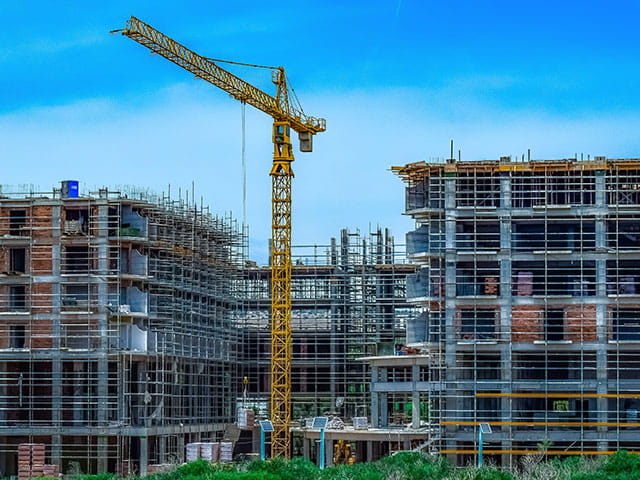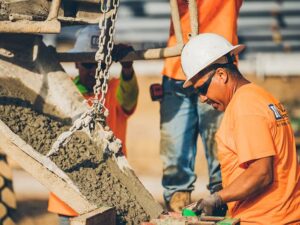The Future of Construction

The construction industry is undergoing a rapid transformation as new technologies, sustainable practices, and evolving workforce dynamics reshape the landscape. As we move into 2025, industry professionals must keep an eye on emerging trends that will redefine how buildings and infrastructure are designed, built, and maintained. From artificial intelligence (AI) to modular construction, here are the key trends shaping the future of construction in 2025.
1. Artificial Intelligence and Automation
AI is becoming an integral part of the construction sector, improving efficiency, safety, and cost-effectiveness. In 2025, AI-powered tools will be increasingly used for project planning, risk assessment, and predictive maintenance. Machine learning algorithms can analyze vast amounts of data to optimize construction schedules, reduce delays, and enhance decision-making.
Automation, including the use of robotics, will also continue to gain traction. Autonomous construction equipment such as drones and robotic bricklayers are expected to minimize human labor, reduce errors, and accelerate project completion times. AI-powered monitoring systems will also improve job site safety by detecting hazards in real-time and preventing accidents.
2. Sustainable and Green Building Practices
Environmental concerns are pushing the construction industry toward more sustainable practices. Green building materials, energy-efficient designs, and waste-reducing technologies will dominate in 2025. Expect to see an increase in the use of recycled materials, carbon-negative concrete, and self-healing bio-concrete, which helps repair structural cracks on its own.
Net-zero buildings, which produce as much energy as they consume, will become more common. Solar panels, smart HVAC systems, and energy-efficient windows will be widely integrated into new developments. In addition, governments worldwide are expected to introduce stricter regulations on emissions and energy use in construction, further driving sustainability initiatives.
3. Modular and Prefabricated Construction
The demand for faster, more cost-effective building solutions is fueling the growth of modular and prefabricated construction. These methods involve assembling building components in a factory setting before transporting them to the construction site for assembly. This approach significantly reduces construction time, labor costs, and material waste. CCR-Mag.com highlights the growing importance of modular construction in addressing modern housing challenges and improving efficiency in large-scale infrastructure projects.
In 2025, advancements in modular construction will make it an even more attractive option for residential, commercial, and industrial projects. The increased use of 3D printing technology in modular construction will further streamline the process, allowing for greater design flexibility and reduced costs. As a result, we can expect modular buildings to become a mainstream solution for addressing housing shortages and infrastructure needs.
4. Smart Construction and IoT Integration
The Internet of Things (IoT) is transforming how construction projects are managed. Smart sensors, wearable technology, and connected equipment are enhancing efficiency and safety. In 2025, construction sites will see a higher adoption of IoT devices that monitor real-time conditions such as temperature, humidity, and structural integrity.
Smart helmets, vests, and augmented reality (AR) goggles will improve worker safety and efficiency. These wearables will provide real-time alerts, navigation assistance, and remote collaboration capabilities. In addition, IoT-enabled predictive maintenance will reduce downtime and extend the lifespan of machinery and equipment.
5. Digital Twin Technology
Digital twin technology is revolutionizing construction by allowing real-time simulations of physical buildings and infrastructure. A digital twin is a virtual replica of a construction project that integrates real-time data and analytics. It enables stakeholders to predict performance issues, optimize energy use, and improve maintenance strategies.
In 2025, more construction firms will adopt digital twin technology to enhance project planning and execution. By leveraging data from IoT sensors and AI algorithms, digital twins will enable more accurate forecasting, reducing costly errors and improving project efficiency.
6. Advanced Building Materials
Innovation in building materials is playing a crucial role in the future of construction. In 2025, expect to see more widespread use of advanced materials that improve durability, sustainability, and cost-effectiveness. Examples include:
- Self-healing concrete: This material can repair cracks automatically, reducing maintenance costs.
- Graphene-enhanced materials: Stronger and lighter than traditional materials, graphene can enhance the structural integrity of buildings.
- Transparent solar panels: These allow windows to generate electricity while maintaining their transparency.
- Aerogel insulation: A highly efficient insulating material that improves energy efficiency in buildings.
These materials will not only extend the lifespan of structures but also contribute to environmental sustainability by reducing waste and energy consumption.

7. Workforce Evolution and Skills Development
As technology continues to reshape construction, the industry is facing a shift in workforce demands. In 2025, skilled workers with expertise in AI, robotics, and data analytics will be in high demand. Traditional construction jobs will evolve, requiring employees to adapt to new technologies and automation processes.
To bridge the skills gap, more companies will invest in training programs, apprenticeships, and partnerships with educational institutions. Online learning platforms and virtual reality (VR) training simulations will become standard tools for upskilling workers, ensuring they stay competitive in the changing industry landscape.
8. Resilient and Disaster-Proof Infrastructure
With climate change and extreme weather events becoming more frequent, resilient construction is a growing priority. In 2025, we will see an increased focus on designing infrastructure that can withstand natural disasters such as hurricanes, earthquakes, and floods.
Smart cities will integrate resilient designs with real-time monitoring systems that detect structural vulnerabilities before they become critical issues. Advanced engineering techniques, including flexible building materials and adaptive designs, will help minimize damage and ensure quicker recovery after disasters.
9. The Rise of 3D Printing in Construction
3D printing technology is revolutionizing how buildings and infrastructure are constructed. In 2025, we can expect to see greater adoption of large-scale 3D printers that create entire structures quickly and cost-effectively. This technology allows for rapid housing development, especially in areas affected by natural disasters or housing shortages.
3D printing also reduces material waste and offers greater design flexibility. As the technology advances, the construction industry will see more innovative architectural designs that were previously impossible using traditional methods.
10. Regulatory and Safety Advancements
Regulatory frameworks will continue to evolve in response to new construction technologies and environmental concerns. In 2025, expect stricter safety regulations and building codes aimed at reducing workplace accidents and improving structural integrity. Governments will also implement more incentives for green construction and energy-efficient buildings.
Technology-driven compliance solutions, such as AI-powered inspection tools and digital permitting platforms, will streamline regulatory processes and ensure that projects meet safety standards more efficiently.
Conclusion
The construction industry is on the brink of a technological and sustainable revolution. As we step into 2025, AI, modular construction, IoT integration, and advanced building materials will redefine how we build and maintain structures. Companies that embrace these trends will gain a competitive edge, improving efficiency, safety, and environmental sustainability.
By staying ahead of these innovations, construction professionals can prepare for a future where buildings are smarter, greener, and more resilient than ever before. The industry’s ability to adapt will determine how successfully it navigates the challenges and opportunities of the coming years.





